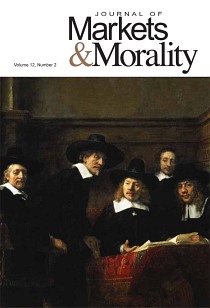 In today’s edition of Capital Commentary, HBU assistant professor of literature Micah Mattix explores the question, “How Might the Arts Be Funded?” He ably and briefly surveys the recent history of politics surrounding the NEA.
In today’s edition of Capital Commentary, HBU assistant professor of literature Micah Mattix explores the question, “How Might the Arts Be Funded?” He ably and briefly surveys the recent history of politics surrounding the NEA.
And he concludes by noting that art is inherently “relational” and that “the problem with large, centralized organizations like the Endowment is that they are often unable to take such relational elements into account.”
He muses:
However the arts are to be funded, this relational element of art must be taken into account. Instead of encouraging artists to write against their audience out of spite or merely play it safe, funding should help artists to flourish while encouraging them to communicate the truth (of which speaking “prophetically” is part) in love. I wonder if funding the arts at the local level might help to do exactly this.
We can think of it in another helpful way as the concept of subsidiarity (which is a principle of society, not just politics) applied to the arts, specifically artists and their communities and audiences. In some ways this question about funding and the arts is a subset of the broader cultural critique of the market economy, that is, that markets do not support authentic cultural expression. This also has to do with whether you think work, leisure, or some third thing is the basis of culture.
In an argument analogous to that which Abraham Kuyper makes in his treatise, Common Grace in Science and Art, it may be at one time that the arts were necessarily dependent on institutional support from the church and the state in order to exist and grow. But we are certainly at the point, at least in the developed West, where it is not strictly necessary from a purely financial point of view that the government serve as the sole, or even primary, patron. The ideal in this vein is that the arts flourish and mature, come into their own and stand in their own independent space, related to other spheres yet distinct from them in terms of their general sustenance. (This is not to say that civic and sacred art projects are out of bounds, but that they do not exhaust the limits of art as a cultural phenomenon. They are, rather, projects that are intended to illustrate the grandeur of the empire, whether temporal or eternal, respectively.)
Mattix draws on a recent controversy over the Christian stewardship of art published in the Journal of Markets & Morality between Calvin Seerveld and Nathan Jacobs. You can find the text of their dialogue in issue 12.2, and you can also listen to a subsequent podcast moderated by David Michael Phelps (in two parts: Part 1 and Part 2).
